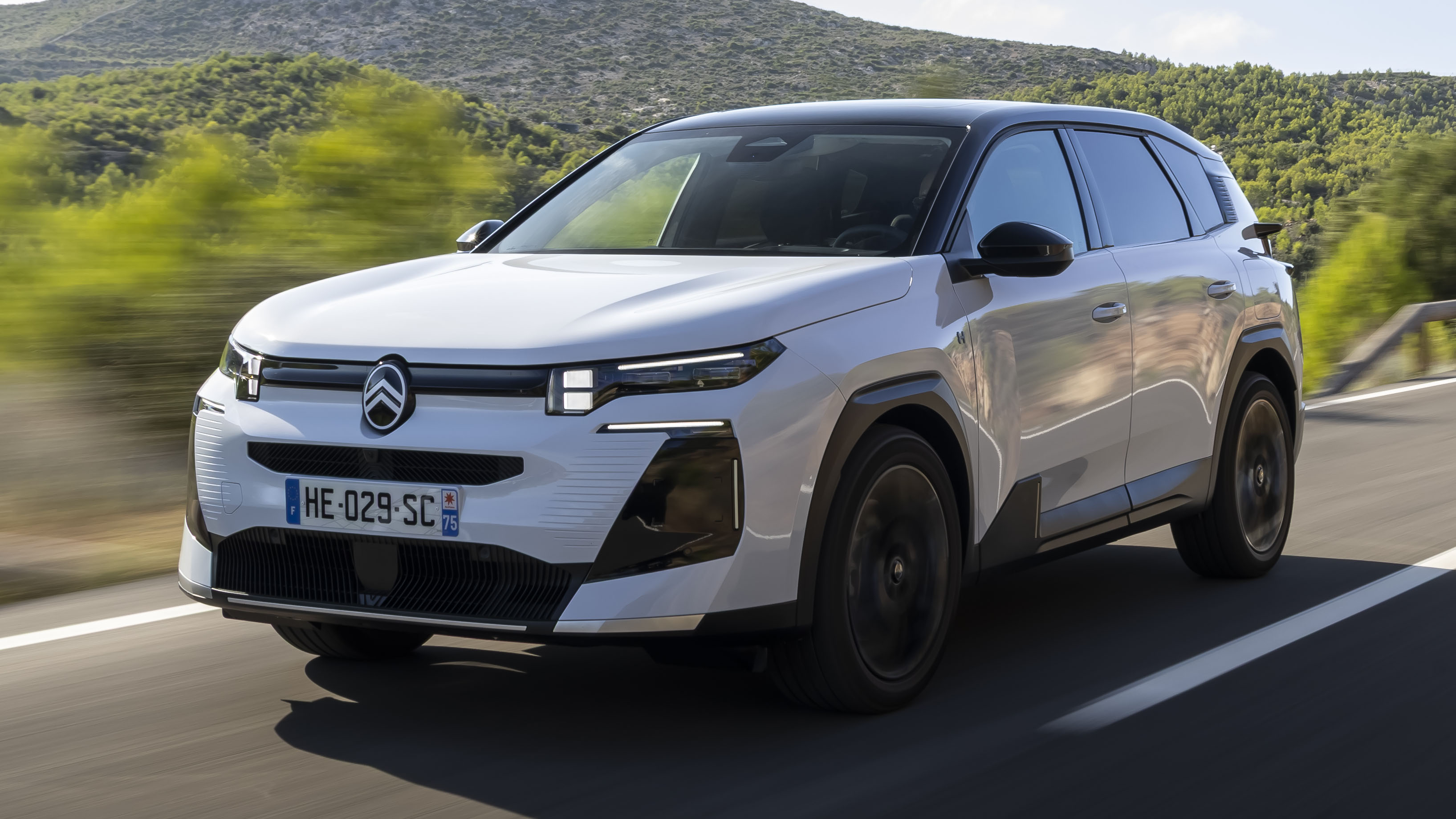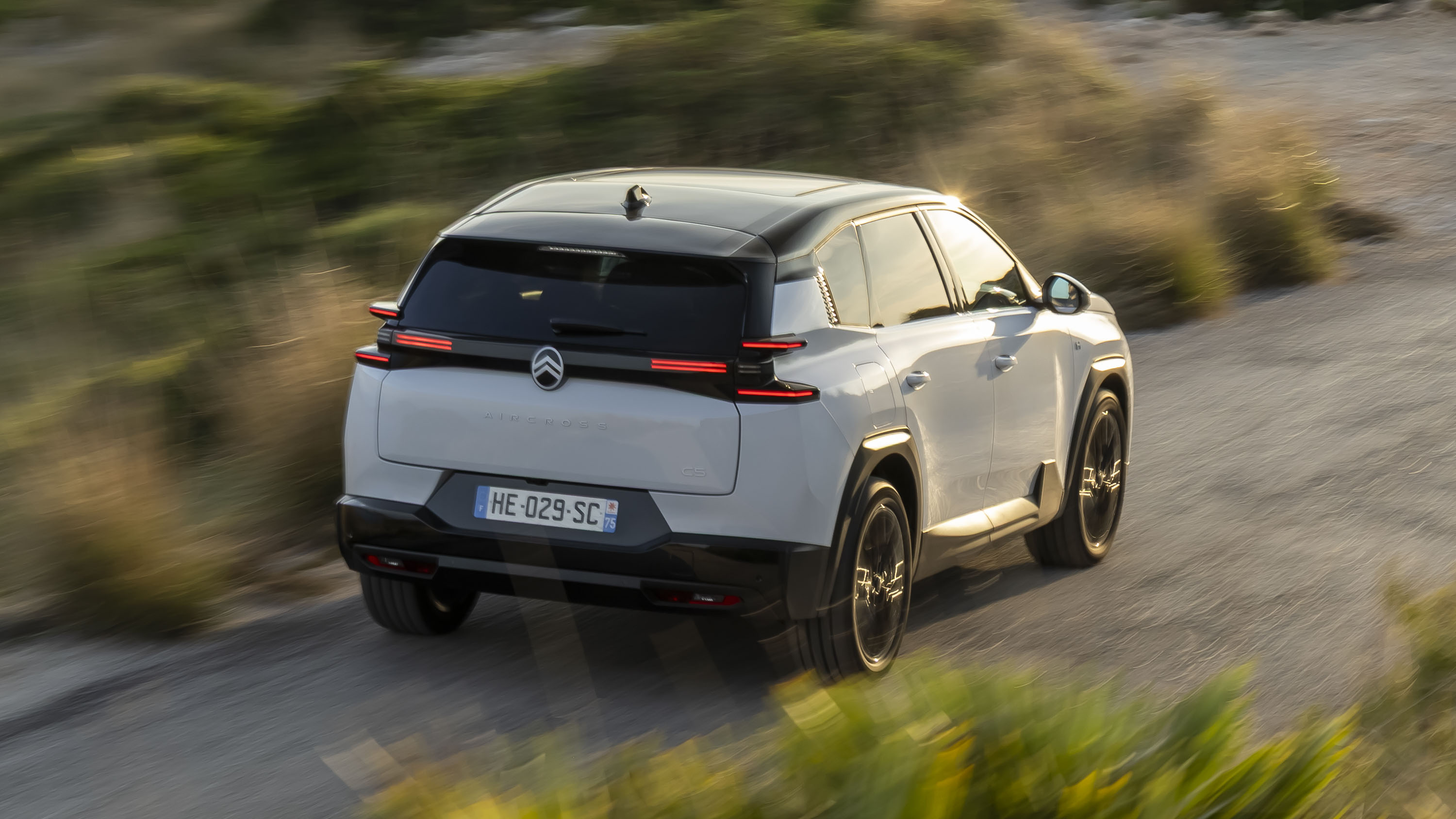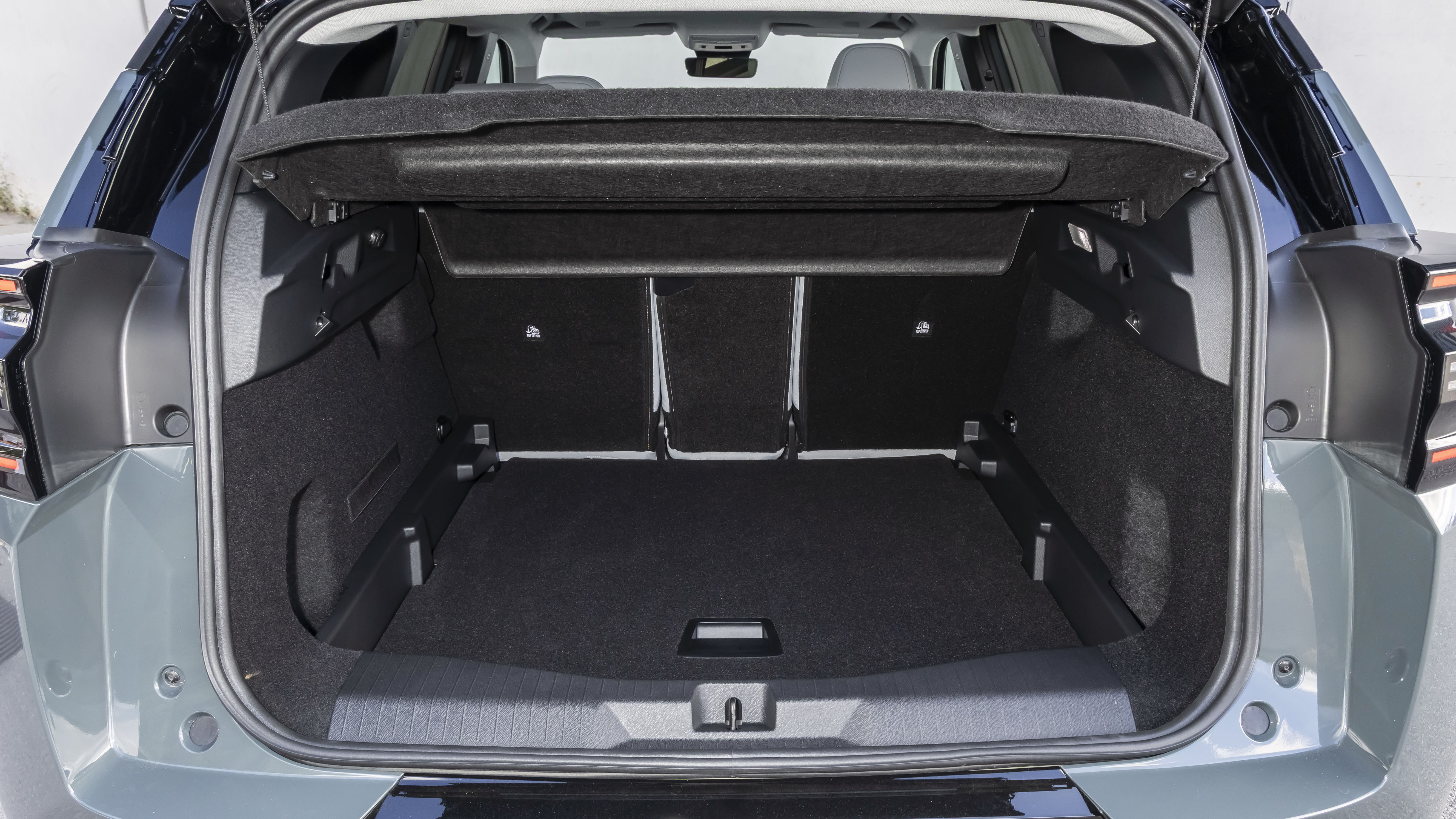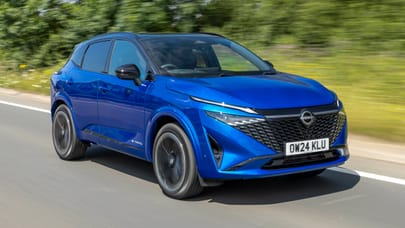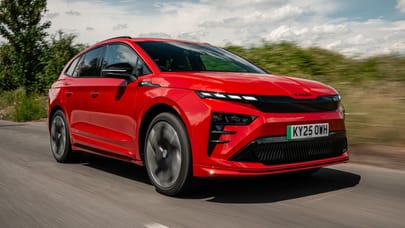
Good stuff
Neither petrol or EV are compromised. Holds the family. Drives sweetly
Bad stuff
Rear seats less versatile than before. Hardly king of the outside lane. Some cheap cabin bits
Overview
What is it?
The new version of Citroen's very useful and refreshingly honest family crossover. Refreshingly honest? Yup, it never pretended to be sporty, never came in a high-powered, over-tyred version, and always rejected go-faster graphics. It is comfy and spacious. Best of all, it doesn't let its rationality completely erase a certain quirkiness.
For the second generation, it's almost completely new. Related under the skin, and so a rival to, the Vauxhall Grandland and Peugeot 3008. The Jeep Compass too. But Jeep buyers look across the Atlantic while Citroen buyers feel more at home gazing over the Channel. They're just different people so buyers of either likely wouldn't consider the other.
Anyway, this Group makeup means the C5 is eligible for a three-cylinder mild-hybrid powertrain, or a PHEV, or a full battery drive. Something for everyone. Except that is those who demand German-style schportiness.
Other petrol and electric rivals include the Renault Austral and Scenic, Skoda Kodiaq and Enyaq, VW Tiguan and ID.4, Nissan Qashqai and Ariya, Kia Sportage and EV5, Toyota RAV4 and bZ4x, Ford Kuga and Explorer, MG HS and S5.
Does it really look quirky?
You can see a lineage to the splendidly out-there Oli concept car. Check the blade-like protruding lights, and the chiselled surfaces and square-topped arches. Several of these elements cut drag. The CdA (that's total drag, accounting for frontal area) is 0.75m2, versus 0.84m2 for the old one. That cut is equivalent, Citroen says, to an extra 18 miles of electric range at motorway speed.
How's the inside?
Cabin design is also distinctive, with a big central screen and lounge-like furniture. Stereo tweeters sit in horns on the dash ends, and the screen opens up a big space beyond. The big deal is the 'advanced comfort' seats, which are seriously squishy but supportive too.
There's loads of room in the back and boot. Click through to the interior tabs of this review for more detail.
Sadly the old C5 Aircross's individual rear seats, its most distinctive bit of packaging and something very child-friendly, have gone.
What are the drive systems, and what do they do?
Things start with a 1.2-litre three-cylinder engine paired with a 48V motor in the six-speed DCT autobox. A mild hybrid in other words. It makes 145bhp in total, for a 0-62mph time of 11.2 seconds. Which sounds less like an acceleration time than a gestation period.
Then a 1.6-litre engine paired with a PHEV system, for 8.3s 0-62, a WLTP electric range of 53 miles and 62g/km tax-friendly emissions performance.
But the fully electric one is more straightforward, barely slower at 8.9s 0-62, and running 320 miles in the WLTP cycle. That's on a 74kWh (net) battery and front motor. Soon there will be an optional jump to a 97kWh battery for an impressive 422 miles WLTP.
So how do those engines feel?
The mild-hybrid is one we've driven in multiple other Stellantis cars, and here it's actually more effective than the acceleration figure implies. The motor and engine handshake neatly, it's generally pretty quiet and the dual-clutch autobox has a strategy that makes the best of things.
The electric one is just as you'd predict – a direct answer to your right foot with no interruptions or surges.
We've yet to try the PHEV. Citroen, Peugeot and DS have until recently used a system with feeble battery range, an indecisive transmission and messy acceleration as it juggled electric and petrol. This is a new setup though, with more electric power and a new seven-speed DCT. So it should be better, but we need to reserve judgment for now.
If it's not sporty, is it a total dirge to drive?
Obviously it puts emphasis on comfort. The low speed ride is maybe a little stiffer than you'd expect, if no worse than rivals, but once you're moving the suspension is lovely and supple.
Yet, thanks to some tricky multi-rate (but not adaptive) dampers, the control of body motions at speed is impressive, so you can throw it at a corner or undulating road with confidence.
More detail on all this in the driving tab of this review.
What's the verdict?
The C5 clears all the family crossover hygiene factors with ease. It has bags of room, and it's efficient and well priced, with launch versions from a squeak over £30k to a fraction under £40k. Sure, you won't take long to find places in the cabin where they saved cash (the vents feel super cheap) but in the important ways it's fully up to snuff.
Of course it isn't as progressive as the great past Citroens. But hey, it looks idiosyncratic enough that you won't lose it among all the blobby crossovers in the car park, without actively frightening anyone. And it hits the Citroen promise of comfort.
Starting with a generic set of Stellantis corporate parts, Citroen has managed to make something with a character of its own. This is a likeable car because it's honest. Its driving dynamics recognise that the people who buy it won't be climbing mountains or lapping racetracks. It doesn't pretend, and it recognises its buyers don't pretend either.




